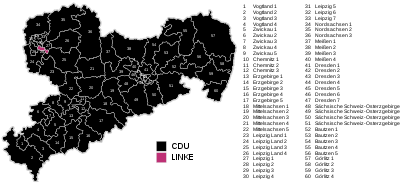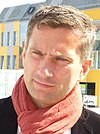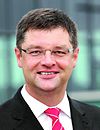Next Saxony state election
|
|
||||||||||||||||||||||||||||||||||||||||||||||||||||||||||||||||||||||||||||||||||||||||||||||||||||||||||||
|---|---|---|---|---|---|---|---|---|---|---|---|---|---|---|---|---|---|---|---|---|---|---|---|---|---|---|---|---|---|---|---|---|---|---|---|---|---|---|---|---|---|---|---|---|---|---|---|---|---|---|---|---|---|---|---|---|---|---|---|---|---|---|---|---|---|---|---|---|---|---|---|---|---|---|---|---|---|---|---|---|---|---|---|---|---|---|---|---|---|---|---|---|---|---|---|---|---|---|---|---|---|---|---|---|---|---|---|---|
|
||||||||||||||||||||||||||||||||||||||||||||||||||||||||||||||||||||||||||||||||||||||||||||||||||||||||||||
|
All 126 seats of the Landtag of Saxony 64 seats needed for a majority |
||||||||||||||||||||||||||||||||||||||||||||||||||||||||||||||||||||||||||||||||||||||||||||||||||||||||||||
| Turnout | 49.2% | |||||||||||||||||||||||||||||||||||||||||||||||||||||||||||||||||||||||||||||||||||||||||||||||||||||||||||
|
||||||||||||||||||||||||||||||||||||||||||||||||||||||||||||||||||||||||||||||||||||||||||||||||||||||||||||

|
||||||||||||||||||||||||||||||||||||||||||||||||||||||||||||||||||||||||||||||||||||||||||||||||||||||||||||
|
||||||||||||||||||||||||||||||||||||||||||||||||||||||||||||||||||||||||||||||||||||||||||||||||||||||||||||
A state election was held on 31 August 2014 in the state of Saxony in Germany, as required by the state constitution. Minister-President Stanislaw Tillich sought to retain power.
After the previous state election in 2009, the CDU emerged as the largest party and formed a coalition with the FDP, ending their coalition with the SPD. Thus, before the 2014 election, the Saxony state government was the only government nationwide that involved the FDP. Due to the national decline in support for the FDP, a continuation of this coalition seemed unlikely as it was uncertain whether the FDP would reach the 5% threshold necessary to gain seats.
The largest opposition party in Saxony was the Left Party. One possible outcome, according to the polls, would have been a coalition between the Left, the SPD and the Greens; however this option was rejected by both the SPD and the Greens before the election.
For the SPD, the state election in Saxony was the second electoral test after the European elections since being involved (from 2013) at the federal level as junior partners in the coalition government. Polls show that the public perceived the work of the SPD in government as positive. Issues that have been worked on by the government were primarily election promises of the SPD. Despite this, all polls suggested that the SPD would be heading for another third-place finish. In Saxony, the SPD's election campaign was highly tailored to their leading candidate, Martin Dulig, who also involved his family in the campaign. Dulig was also supported by former chancellor Schröder.
The AfD was hoping to gain its first representation in a state parliament in Saxony after the party had achieved its strongest results nationwide in both the federal elections and European elections in Saxony. In the European elections, the party in Saxony received over 10% of the vote, compared to 7% nationwide.
...
Wikipedia






